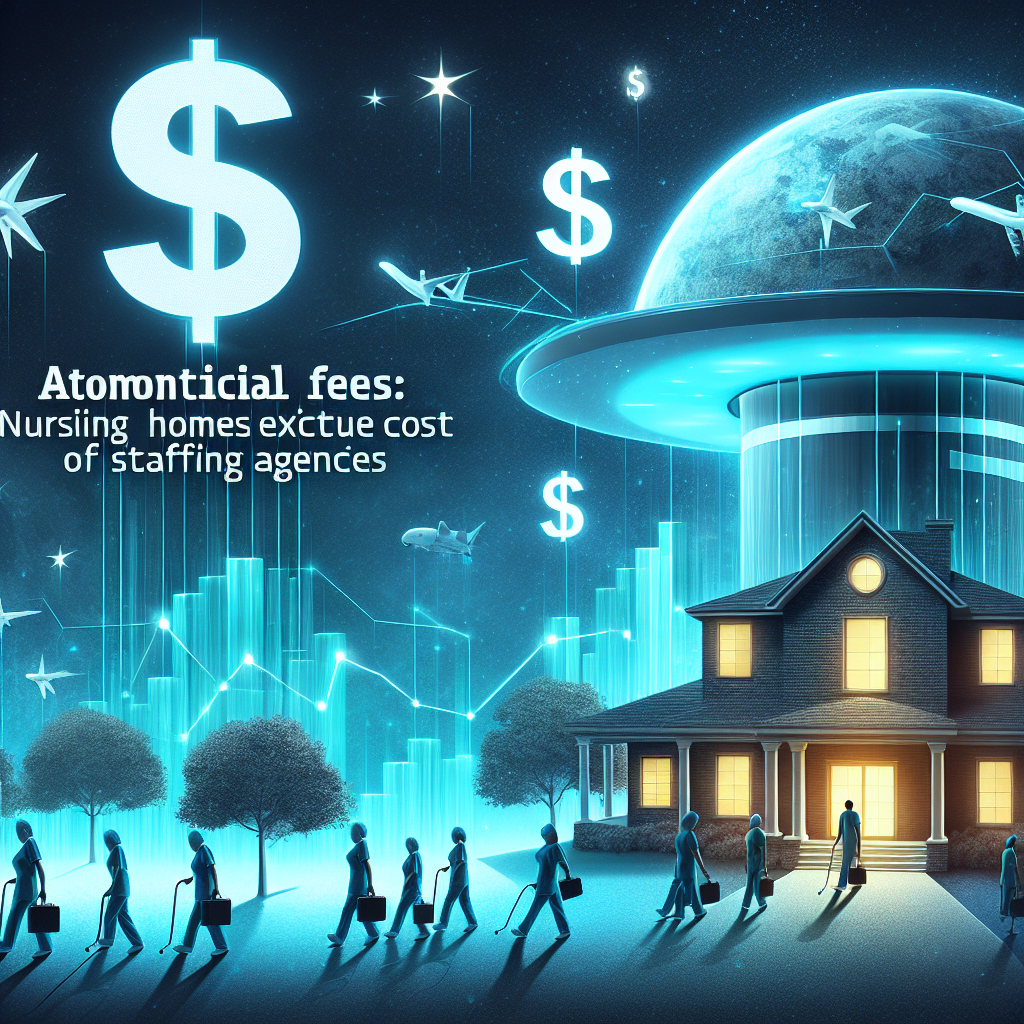New York, NY— In the heart of America’s escalating healthcare dilemma stands an imposing fiscal giant—astronomical staffing agency fees—that’s draining the lifeblood from our nursing homes, exposing the staggering true costs of temporary staffing solutions and igniting a debate on the sustainability of such practices in a sector already under considerable strain.
As these facilities scramble to fill staffing voids exacerbated by an aging population and a shrinking workforce, many are turning to staffing agencies as a seemingly quick fix to bridge the gap. However, this solution comes at a price—a price that, for many, is spiraling out of control and raising alarming questions about the long-term viability of our care homes.
According to a recent study, the fees charged by staffing agencies can be up to 30% higher than the cost of employing staff directly. This premium is a heavy burden on already financially strapped nursing homes, forcing some into perilous financial situations, and, in the worst cases, out of business entirely.
The dependency on staffing agencies not only exacerbates the financial instability of these critical care facilities but also creates a disjointed care environment for the residents due to the lack of consistency in caregivers. This revolving door of new faces can disrupt the continuity of care, which is paramount in ensuring the highest quality of life for the elderly and infirm.
One nursing home administrator lamented, “We’re essentially held hostage by these agencies. We can’t do without them because of the staffing shortages, but their fees are pushing our operating costs to unsustainable levels. It’s a vicious cycle with no end in sight.”
This dire situation is a wakeup call for systemic change. Options such as increased investment in healthcare education, creating incentives to work directly for care facilities, and implementing technology that can alleviate the burden on human caregivers are critical in addressing the root causes of this crisis.
Critics argue that while staffing agencies provide a necessary stopgap in today’s labor market, their unchecked growth and the fees they command are counterintuitive to the long-term health of the nursing home industry. They contend that the focus should be on creating a more sustainable workforce model that ensures the financial health of care homes while delivering consistent, high-quality care to residents.
As the debate rages on, what remains clear is that the astronomical fees associated with staffing agencies are a symptom of a larger issue plaguing the healthcare sector—a shortage of skilled labor. Solving this crisis requires a multifaceted approach that addresses both the symptoms and the disease, ensuring a stable, sustainable future for nursing homes and the vulnerable populations they serve.


